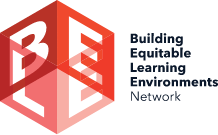District-Level Learnings from the Field
By the BELE Network

In order to create learning environments where all students can thrive academically, socially, and emotionally, school districts must design schoolwide systems and structures that center students. This is at the core of the BELE Network’s first Essential Action, making systems human-centered. The Collaborative for Academic, Social, and Emotional Learning (CASEL) and the National Equity Project (NEP) recently published the BELE Network’s first learning brief, sharing learnings on how to put this Essential Action to practice. By intentionally centering students’ daily experiences in school, we can create learning environments that help positively shape students’ identity, perceptions, and beliefs as a person. Putting these learnings to action will allow us to help students unlock their full potential, both inside and outside of the classroom.
In beginning to redesign education systems for student success, three conditions are necessary to support educators and staff members who will make this happen:
- Cross-departmental collaboration within a school district serves as an accelerator for this work.
BELE partners have found that work that centers students is more effective when school districts create a collaborative infrastructure, with organizational processes and resources in place to support equity initiatives. A district’s strategic plan to redesign systems and structures is critical, however, they also need aligned leadership and an ability to collaborate across departments. To collaborate effectively, members must regularly meet to advance their work, review existing departmental initiatives, and review previously established relationships. Leaders must also come together to continue the work that’s already happening to center the humanity of students. - District leaders need to be clear about the questions “Why is this important for equity?” and “How does this work connect to the community?”
To create their own personal definition of equity, leaders should be able to answer these questions about their work. By doing this, their work will become clearer and more efficient, reducing confusion and misconceptions about equity. Equity leaders who develop their personal definition are more grounded in the work and are better equipped to navigate challenges as they protect and sustain equity efforts. - The collaborative inquiry model is needed for collaboration across departments for data-informed strategic planning and decision-making.
The collaborative inquiry model can help educators think more critically about equity-centered environments. Using the model, district leaders set aside dedicated time for teams in different departments to work together. During this space and time, they can intentionally establish a community to learn and reflect on equitable environments, to improve and be the drivers of equity work.
District leaders and educators can play a part in building positive student experiences, where students feel safe, seen, engaged, and connected in their learning environment. By establishing these three conditions, schools can intentionally center student experiences that lead to better student outcomes and healthy, thriving students. To learn more about these three conditions to make systems human-centered, read the BELE Network’s first learning brief from the Collaborative for Academic, Social, and Emotional Learning (CASEL) and the National Equity Project (NEP).
The BELE Network is working alongside partner members to share learning briefs to advance equity in education, which are grounded in seven Essential Actions. We encourage you to visit the BELE Resource Library, an evolving repository of resources and recommendations, to find the resources best suited to your unique needs. You can also subscribe to the BELE monthly newsletter here to get the latest learnings straight to your inbox.
The BELE Network is dedicated to reimagining our inequitable school system that has failed too many for too long, and is committed to transforming our classrooms into learning environments that nurture the intellectual, emotional and cultural growth of all students — especially students of color. Learn more about BELE on our website, and access our resource library to get the best and most up-to-date thinking on how to make learning environments more equitable.


